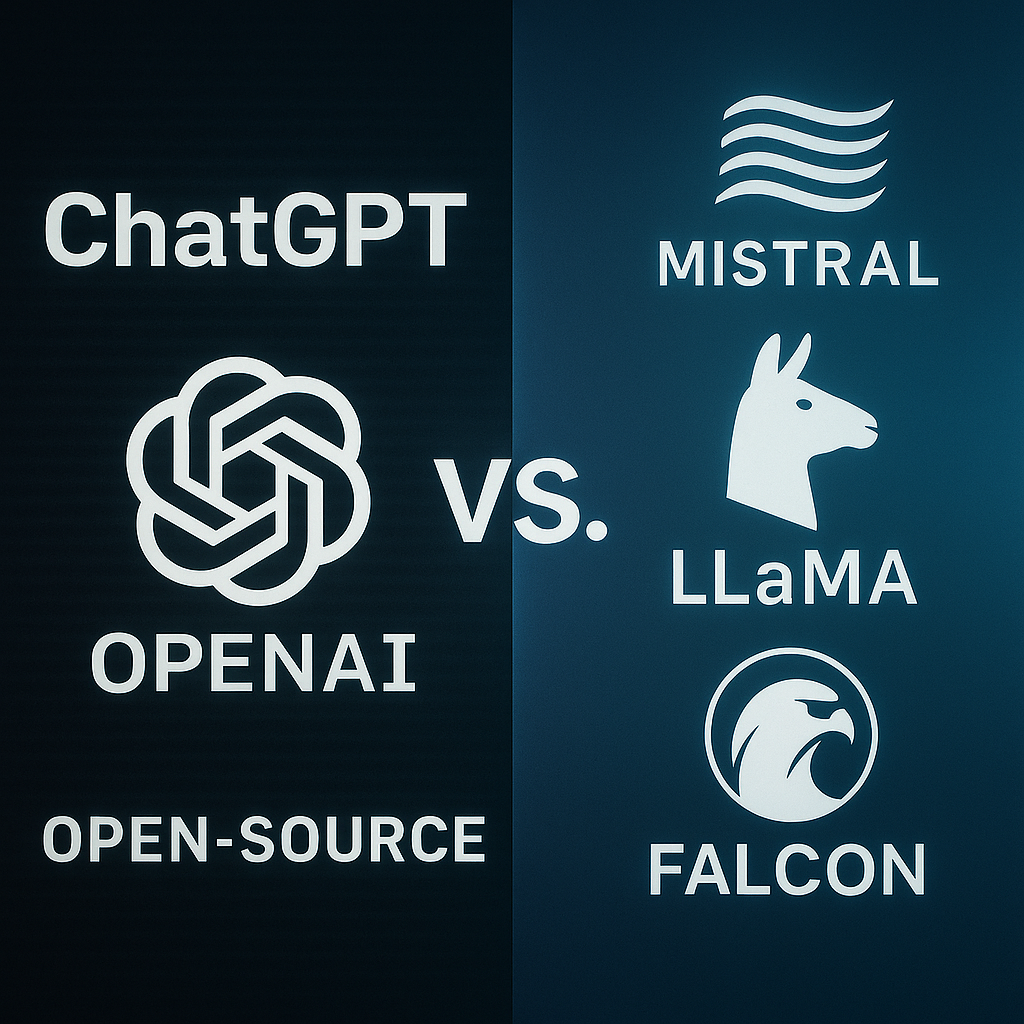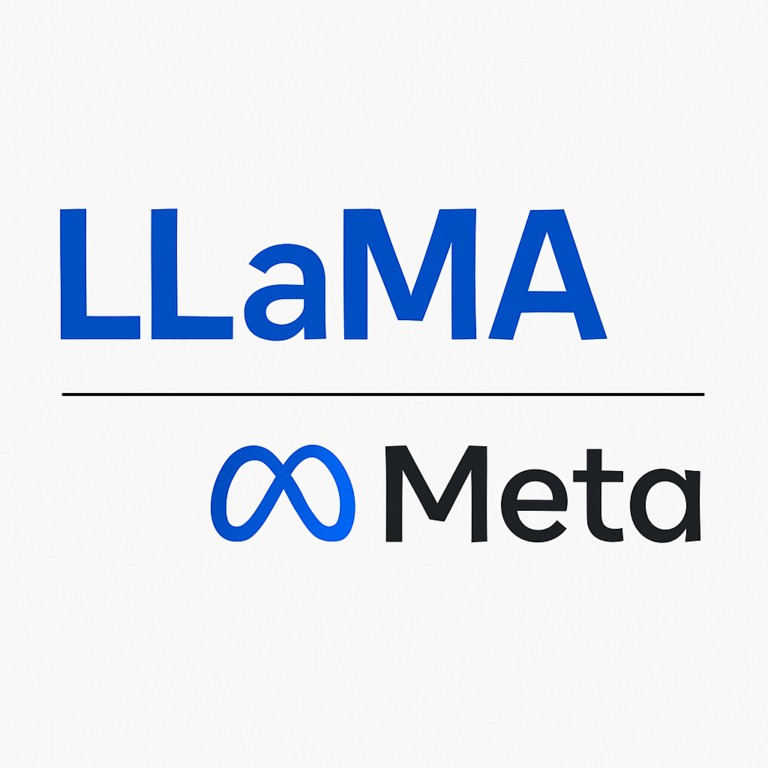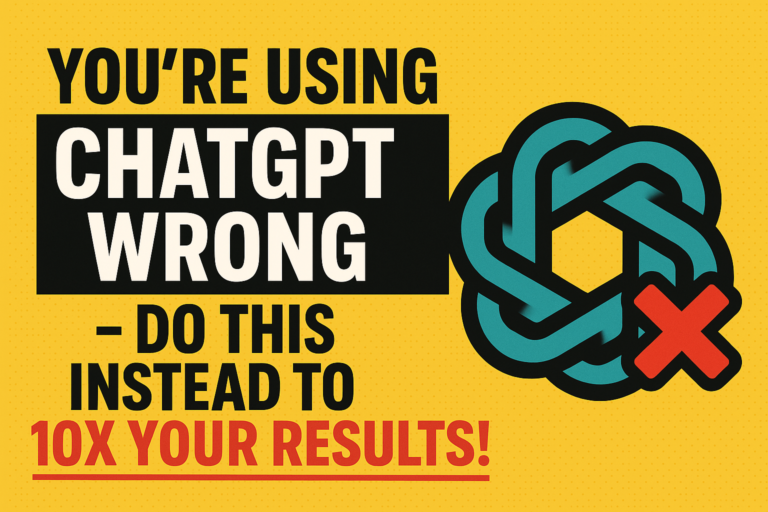-
1
Why Everyone’s Talking About Open-Source AI: Is ChatGPT in Trouble?
- 1.1 Table of Contents
- 1.2 Introduction: A Revolution in Progress
- 1.3 The Rise of Open-Source AI
- 1.4 Tool #1: Mistral AI – Lightweight but Mighty
- 1.5 Tool #2: LLaMA by Meta – Scalable and Open
- 1.6 Tool #3: Falcon – Open-Source Efficiency Redefined
- 1.7 Tool #4: Mixtral – The MoE Game-Changer
- 1.8 Tool #5: Ollama – The User-Friendly Local AI Runner
- 1.9 Bonus Mention: LM Studio
- 1.10 Head-to-Head: Open-Source AI vs ChatGPT
- 1.11 Who Should Use What? A Practical Guide
- 1.12 FAQs: All You Need to Know
- 1.13 Closing Insights: Is ChatGPT Really in Trouble?
Why Everyone’s Talking About Open-Source AI: Is ChatGPT in Trouble?
Table of Contents
- Introduction: A Revolution in Progress
- The Rise of Open-Source AI
- Tool #1: Mistral AI – Lightweight but Mighty
- Tool #2: LLaMA by Meta – Scalable and Open
- Tool #3: Falcon – Open-Source Efficiency Redefined
- Tool #4: Mixtral – The MoE Game-Changer
- Tool #5: Ollama – The User-Friendly Local AI Runner
- Bonus Mention: LM Studio
- Head-to-Head: Open-Source AI vs ChatGPT
- Who Should Use What? A Practical Guide
- FAQs: All You Need to Know
- Closing Insights: Is ChatGPT Really in Trouble?
Introduction: A Revolution in Progress
Artificial Intelligence (AI) is no longer just a futuristic concept—it’s the engine driving some of the most transformative changes in our world today. From virtual assistants like Siri and Alexa to enterprise-level solutions that automate complex workflows, AI has become deeply integrated into daily life. At the forefront of this revolution is ChatGPT, OpenAI’s conversational AI model, which has redefined what we expect from human-like machine interactions. With its polished user experience, impressive natural language processing, and rapid adoption across industries, ChatGPT has become the benchmark for what conversational AI should look like.
But the tide is shifting. A new wave of open-source AI models is challenging the dominance of proprietary solutions. These models—developed by communities of researchers, engineers, and startups—are not only matching ChatGPT in performance but, in some areas, surpassing it. What sets them apart? Freedom, transparency, and flexibility. Open-source AI models give developers complete control over the technology, from fine-tuning and custom deployment to reducing costs by running them on local servers.
Over the past year, names like LLaMA (by Meta), Mistral AI, Falcon, and Mixtral have become synonymous with cutting-edge open-source innovation. They offer many of the same capabilities as ChatGPT, such as generating human-like text, summarizing data, and assisting with coding, but without the constraints of closed APIs or costly subscriptions. This has raised a pressing question in tech circles: Is ChatGPT’s dominance under threat? While OpenAI continues to evolve its offerings, the agility and collaborative nature of open-source models are proving to be a powerful advantage.
The excitement around open-source AI isn’t limited to developers or researchers. Businesses are also exploring these tools as cost-effective and customizable alternatives to proprietary platforms. For small startups or enterprises dealing with sensitive data, open-source AI offers the ability to build fully private, self-hosted solutions, a key benefit that closed systems like ChatGPT can’t provide. In many ways, this mirrors the early days of open-source software, when projects like Linux disrupted the traditional software industry by empowering users with choice and flexibility.
In this article, we’ll explore why open-source AI is gaining so much traction and what this means for ChatGPT’s future. We’ll break down five of the most promising open-source AI tools currently making waves, compare their strengths and weaknesses to ChatGPT, and help you determine which platform might be best for your needs. Whether you’re a casual user, a developer, or a business owner, this guide will give you a clear understanding of why everyone’s talking about open-source AI—and whether ChatGPT should be worried.
The Rise of Open-Source AI
The rapid growth of open-source AI marks one of the biggest paradigm shifts in the tech world since the introduction of ChatGPT. For years, the AI space was dominated by closed systems—proprietary models developed by companies like OpenAI, Google, and Anthropic. These systems offered high performance but were inaccessible for developers or businesses who wanted full control over the technology. The emergence of open-source AI in 2024 and its explosive growth in 2025 have completely changed that narrative.
What Is Open-Source AI?
Open-source AI refers to machine learning models, frameworks, and tools that are publicly available for anyone to use, modify, or deploy. Unlike closed models like GPT-4, open-source models release their architecture and (often) their weights, allowing developers to fine-tune them for specific use cases. Platforms such as Hugging Face, LM Studio, and Ollama have made it easier than ever to download and run these models locally—no API keys, no vendor lock-ins, and no recurring subscription fees.
In many ways, open-source AI is following the same trajectory as open-source software. Just as Linux disrupted traditional operating systems by giving developers freedom and flexibility, open-source AI tools are doing the same for machine learning. For companies concerned about data privacy, open-source AI is especially appealing. Rather than sending sensitive data to third-party servers, businesses can deploy AI models on their own infrastructure, ensuring compliance with data regulations like GDPR or CCPA.
Why Is Open-Source AI Taking Off in 2025?
There are several factors driving the surge in open-source AI adoption:
- Cost-Effectiveness – ChatGPT Plus or API usage can quickly become expensive for businesses. Open-source models like LLaMA 4, Mixtral, and Falcon can be run locally at little to no cost, significantly lowering operational expenses.
- Customization – Open-source models can be fine-tuned to specific industries or workflows, whether it’s legal document analysis, healthcare chatbots, or multilingual translation tools. This level of customization is impossible with closed systems.
- Performance Advancements – Models like Mistral 7B and Mixtral have caught up to GPT-3.5 and are competitive with GPT-4 in benchmarks such as reasoning, summarization, and code generation.
- Community Innovation – Thousands of developers around the world are contributing to these open models, creating an ecosystem of tools, fine-tuned variants, and integrations that evolve faster than proprietary solutions.
- Transparency – With open weights and datasets, developers can audit and understand how these models work, something that’s not possible with black-box systems like ChatGPT.
The ChatGPT vs. Open-Source Debate
ChatGPT is still considered the gold standard for conversational AI, thanks to its ease of use, polished interface, and advanced reasoning abilities. However, the open-source ecosystem is evolving rapidly. Tools like Mixtral’s MoE (Mixture of Experts) approach, which optimizes performance while reducing computational costs, are setting new benchmarks for efficiency. For many developers, the ability to own and control their AI stack outweighs the convenience of a closed, subscription-based service.
Key Takeaway
Open-source AI isn’t just a passing trend—it’s a movement that’s reshaping the AI landscape. Businesses and individual developers now have the power to build, deploy, and refine their own AI systems without relying on a single corporate entity. While ChatGPT remains a top choice for casual users, open-source tools are quickly becoming the preferred option for those who need control, scalability, and cost efficiency.
Tool #1: Mistral AI – Lightweight but Mighty

When it comes to open-source AI, Mistral AI has quickly become one of the most talked-about names of 2025. Launched by a group of ex-DeepMind and Meta engineers, Mistral’s mission is simple but powerful: to build smaller, faster, and more efficient language models that deliver cutting-edge performance without the need for massive infrastructure.
Unlike proprietary giants like OpenAI’s GPT-4, Mistral AI takes a radically different approach. Instead of focusing on building massive models with hundreds of billions of parameters, Mistral aims to strike the perfect balance between performance and accessibility. Their Mistral 7B and Mixtral (MoE) models have gained popularity for being lightweight yet competitive, offering developers a tool they can run on consumer-grade GPUs, sometimes even on a high-end laptop or workstation.
Key Features of Mistral AI
- Compact Yet Powerful – Despite having “only” 7 billion parameters, Mistral 7B performs surprisingly well on tasks like summarization, coding, and creative text generation. In benchmarks, it often outperforms models twice its size.
- Open Weights – Unlike ChatGPT, which is locked behind a paywall and API, Mistral releases its weights to the public, enabling anyone to fine-tune or adapt the model for custom applications.
- Multi-Language Support – Mistral excels at multilingual tasks, offering strong performance in English, French, Spanish, and more—perfect for global projects.
- Hardware Friendly – Thanks to its smaller size and support for quantization, Mistral can be run on devices with lower computational power, drastically reducing costs for startups.
- Community-Driven – Mistral has an active open-source community, constantly releasing fine-tuned versions optimized for specific domains (e.g., code generation or customer support).
Why Choose Mistral Over ChatGPT?
For developers, freedom and cost savings are two major reasons to choose Mistral AI. While ChatGPT Plus and API plans can cost $20/month or more, Mistral models are free to download and self-host. Businesses that require private data handling also benefit since Mistral can run completely offline, ensuring no sensitive data leaves your infrastructure.
Another major selling point is customization. ChatGPT does not allow users to fine-tune the base GPT-4 model, but with Mistral, you have the flexibility to train the model with domain-specific data, making it ideal for specialized industries like legal services, healthcare, or finance.
Real-World Use Cases
- AI-Powered Chatbots: Build customer service bots tailored to your brand’s voice.
- Code Assistance: Mistral, fine-tuned on programming datasets, rivals tools like Copilot.
- Content Creation: Automate blog writing, product descriptions, and social media posts.
- Multilingual Translation: Translate content into multiple languages with high accuracy.
Performance Benchmarks
In tests conducted by independent researchers, Mistral 7B achieved results close to GPT-3.5 in tasks such as reasoning and summarization. With the introduction of Mixtral (Mixture of Experts), which activates different subsets of parameters depending on the task, performance efficiency has improved even further.
Pro Tip: If you’re new to Mistral, tools like [Insert affiliate link to Hugging Face or LM Studio] make it incredibly easy to download and run the models locally. You can start experimenting with Mistral in minutes—no complex setup required.
Tool #2: LLaMA by Meta – Scalable and Open
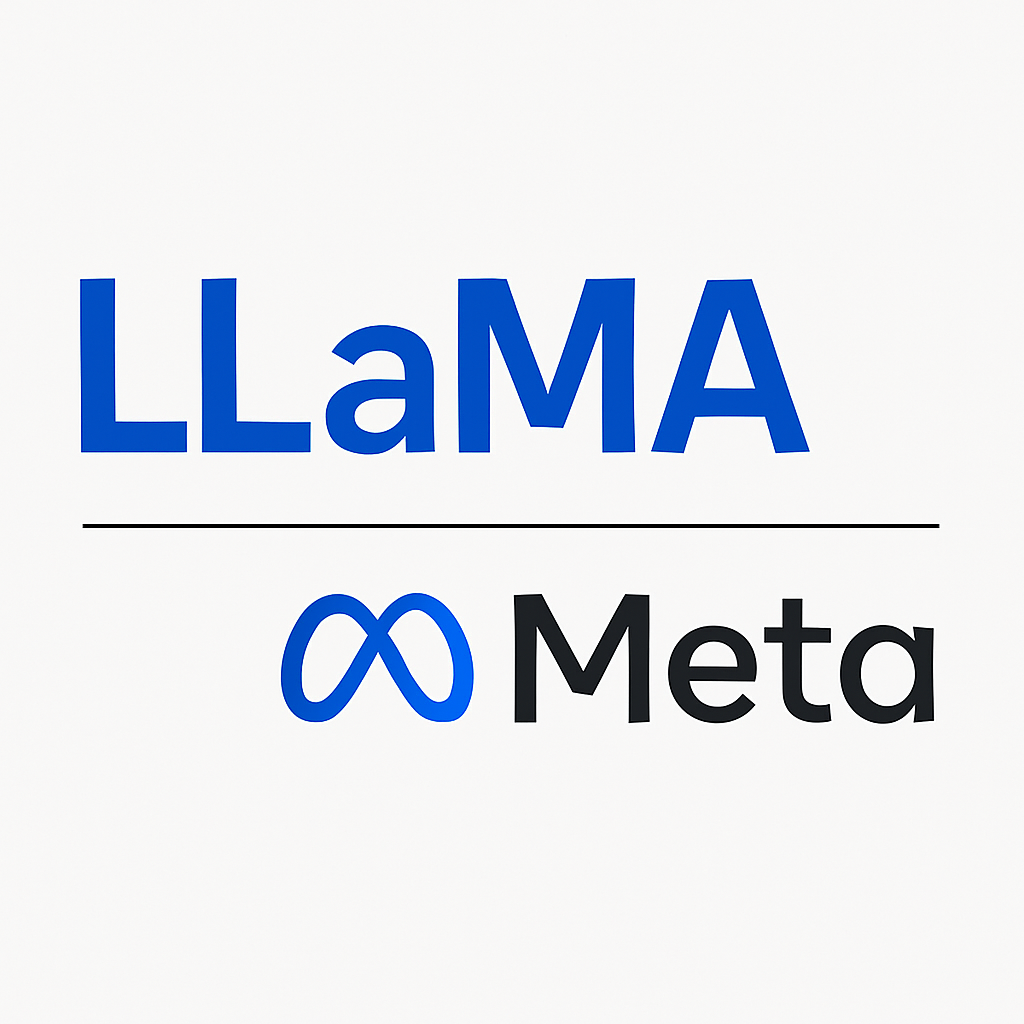
LLaMA: Meta’s open-source AI model that redefines natural language processing with flexibility, cost efficiency, and community-driven innovation.
When Meta (formerly Facebook) introduced LLaMA (Large Language Model Meta AI), it sent shockwaves through the AI industry. Unlike OpenAI, which has kept GPT-4 behind a closed API and subscription model, Meta took a semi-open approach with LLaMA, releasing powerful open-weight language models designed for both research and commercial applications (with proper licensing). By 2025, LLaMA 4, available in 8B and 70B parameter versions, has become one of the strongest contenders in the open-source AI landscape.
What Makes LLaMA Stand Out?
The LLaMA family of models combines the scale and intelligence of proprietary models with the freedom and flexibility of open-source alternatives. It’s not as lightweight as Mistral 7B, but its larger models rival GPT-3.5 and even GPT-4 on various benchmarks, including reasoning, summarization, and creative content generation.
Key highlights include:
- Multiple Sizes for Different Needs – The 8B version can run on a well-equipped local server or cloud GPU, while the 70B version is ideal for enterprise-level applications demanding higher accuracy.
- Exceptional Fine-Tuning Support – LLaMA allows fine-tuning on proprietary datasets, enabling developers to create custom domain-specific chatbots or tools.
- Integration Ready – LLaMA works seamlessly with frameworks like LangChain, Hugging Face Transformers, and OpenLLM, making it ideal for building AI-driven SaaS products.
- Multi-Language Capabilities – Optimized for English and major European languages, it’s suitable for global projects.
- Research-Friendly – Meta provides extensive documentation and open resources, which makes LLaMA one of the go-to choices for academic institutions and AI researchers.
Why Choose LLaMA Over ChatGPT?
ChatGPT remains a polished tool for general-purpose use, but LLaMA’s versatility gives it a major edge for developers and businesses. You can host LLaMA locally or in the cloud, integrate it into pipelines, and tweak its behaviour to fit your unique requirements—something you can’t do with ChatGPT’s closed model.
Another big advantage is cost control. Instead of paying a recurring API fee, companies can run LLaMA on open platforms or GPU hosting services for a fraction of the cost. This flexibility has made LLaMA the preferred choice for AI startups building scalable products.
Real-World Use Cases
- Enterprise Chat Assistants: Large corporations are adopting LLaMA to build custom support bots and internal knowledge systems.
- Content & SEO Tools: Developers use fine-tuned LLaMA models for content creation and keyword optimization.
- AI Agents: Combined with autonomous frameworks like AutoGPT or LangChain, LLaMA powers workflow automation and intelligent agents.
- Coding Assistants: Fine-tuned LLaMA models compete with proprietary code generation tools like GitHub Copilot.
Performance Benchmarks
LLaMA 4 (70B) consistently ranks alongside GPT-4 in independent evaluations. In reasoning and code tasks, it often performs on par with GPT-3.5 Turbo, while offering complete control over privacy and deployment. For enterprises that value both accuracy and flexibility, LLaMA 4 is often the top ChatGPT alternative.
Pro Tip: Tools like [Insert affiliate link to Hugging Face LLaMA Hub or RunPod] let you quickly deploy LLaMA in the cloud, avoiding the hassle of local infrastructure setup.
Tool #3: Falcon – Open-Source Efficiency Redefined
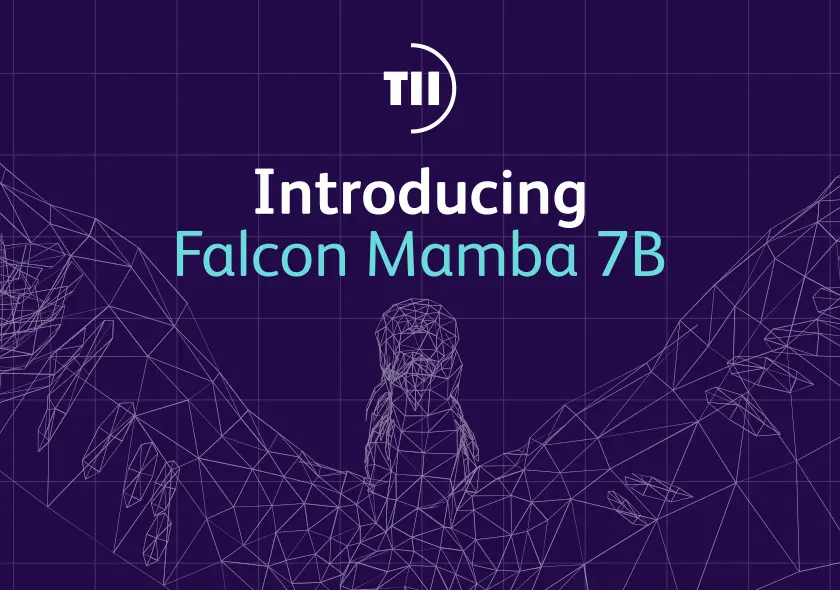
Among the growing list of ChatGPT alternatives, Falcon AI stands out for its remarkable efficiency, performance, and open licensing model. Developed by the Technology Innovation Institute (TII) in Abu Dhabi, Falcon has quickly gained recognition as one of the top open-source language models in 2025. Its two primary versions, Falcon 7B and Falcon 40B, offer impressive accuracy, making Falcon a preferred choice for both hobbyists and enterprises looking to build advanced AI solutions without the heavy costs associated with proprietary models.
Why Falcon Is Special
Falcon’s main advantage lies in its optimized architecture and high-quality training data. It was trained on over 1 trillion tokens of curated, deduplicated content, which gives it a noticeable edge in zero-shot reasoning and factual accuracy. Unlike some open models that rely on messy datasets, Falcon emphasizes data cleanliness and efficiency, resulting in more reliable outputs with fewer hallucinations.
Key features that make Falcon unique:
- Open Commercial License – Falcon can be used in commercial applications without restrictive terms.
- High Performance on Low Hardware – Thanks to its optimized design, Falcon can achieve results close to GPT-3.5 while running on fewer GPU resources.
- Strong Conversational Flow – Falcon is particularly well-suited for multi-turn dialogues and customer support bots.
- Easy Integration – Available on platforms like Hugging Face Hub, with APIs and containerized versions ready to deploy in minutes.
Falcon vs. ChatGPT
While ChatGPT is known for its smooth interface and polished user experience, Falcon offers something that ChatGPT can’t—full control and transparency. Developers can fine-tune Falcon with proprietary data, self-host it for complete privacy, and avoid monthly subscription fees. For businesses handling sensitive information (e.g., legal or healthcare industries), Falcon provides a way to implement AI securely without data ever leaving their servers.
Moreover, Falcon’s cost-effectiveness is a huge draw. If your company processes thousands of AI queries per day, the savings from switching from ChatGPT API pricing to a self-hosted Falcon model can be significant.
Real-World Use Cases
- Customer Support Automation: Build 24/7 support chatbots tailored to specific industries.
- Text Summarization & Research: Quickly summarize reports or academic papers.
- SEO and Content Marketing: Automate blog posts, product descriptions, and ad copy.
- AI Coding Assistants: With the right fine-tuning, Falcon can assist developers in code generation.
Performance Benchmarks
Falcon 40B consistently ranks near GPT-3.5 in benchmark tests, performing especially well in multi-turn reasoning, summarization, and natural dialogue. The Falcon 7B version, while smaller, still outperforms many other open models of similar size, making it an excellent lightweight alternative.
Pro Tip: Want to try Falcon quickly? Use [Insert affiliate link to Hugging Face Falcon deployment or RunPod Falcon instance] to run Falcon in the cloud within minutes—no local setup required.
Tool #4: Mixtral – The MoE Game-Changer
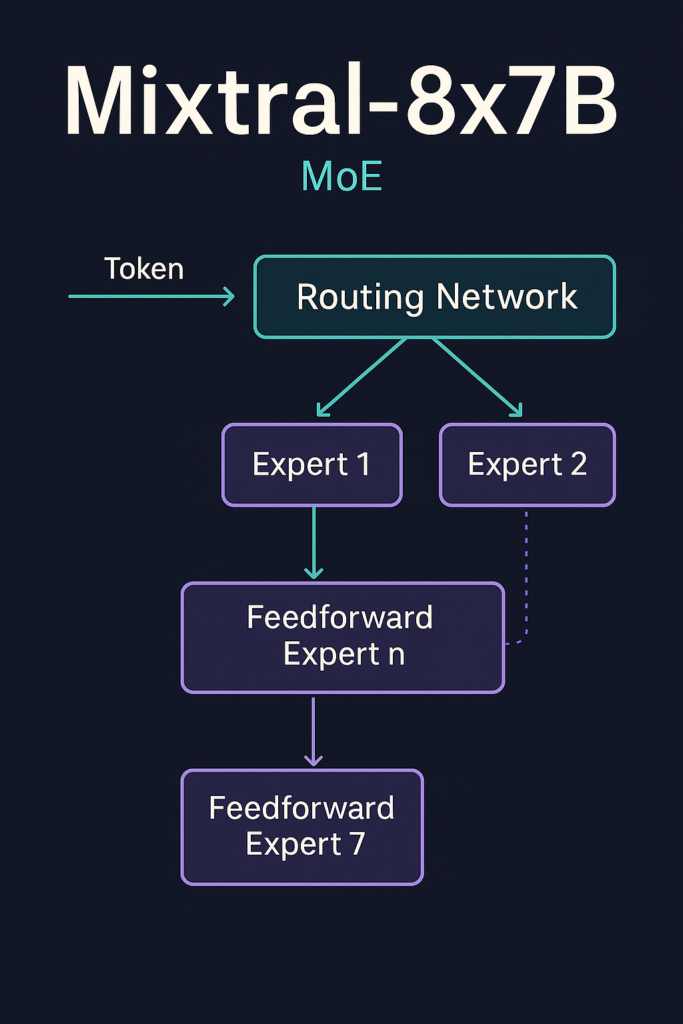
Mixtral, developed by the team behind Mistral AI, is redefining how open-source AI models handle performance and efficiency. What sets Mixtral apart is its Mixture of Experts (MoE) approach, a technique that activates only a subset of the model’s parameters for each query. This design allows Mixtral to offer GPT-4-level performance in certain tasks while using a fraction of the computational resources.
Launched as an evolution of Mistral 7B, Mixtral combines the strengths of multiple expert sub-models into a single, dynamic AI engine. This not only improves response quality but also significantly reduces the cost of running large-scale AI systems. By 2025, Mixtral will have become a go-to choice for developers who need high-performance AI that’s both scalable and cost-efficient.
What Makes Mixtral Special?
- MoE Architecture – Instead of running all parameters at once, Mixtral activates only 2 of its 8 expert sub-models per query, allowing lightning-fast responses while maintaining output quality.
- Competitive Performance – Benchmarks show that Mixtral outperforms GPT-3.5 and comes close to GPT-4 in reasoning tasks, coding, and multi-turn dialogues.
- Resource Efficiency – This architecture allows Mixtral to deliver powerful results with lower VRAM requirements, making it possible to deploy on mid-range GPUs.
- Customizable and Open – Mixtral is open-weight, meaning developers can fine-tune it with custom datasets for niche applications.
- Multi-Task Capabilities – Whether it’s content creation, question answering, or code generation, Mixtral handles complex queries with precision.
Why Choose Mixtral Over ChatGPT?
ChatGPT is an excellent all-purpose AI tool, but it’s locked into a subscription and API pricing model. For teams that require thousands of queries per day, Mixtral offers a self-hosted alternative that’s cheaper to operate and highly customizable. Developers who want to build AI-powered SaaS products, coding assistants, or multilingual tools can fine-tune Mixtral to achieve better performance for specific tasks—something you can’t do with ChatGPT’s closed model.
Additionally, data privacy is a major advantage. With Mixtral running on your own infrastructure, no sensitive data is sent to third-party servers, which is crucial for industries like healthcare, law, or finance.
Real-World Use Cases
- High-Performance Chatbots: Deliver fast, natural responses to customers without incurring heavy API costs.
- Content Marketing Automation: Generate SEO-rich blog posts, ad copy, and product descriptions at scale.
- Programming Assistance: Fine-tune Mixtral for code generation and debugging tasks, rivalling GitHub Copilot.
- AI-Powered Research Tools: Analyze large datasets or summarize lengthy documents efficiently.
Performance Benchmarks
In independent evaluations, Mixtral’s MoE model with 12.9B active parameters surpasses many traditional 13B models in speed and accuracy. It’s been praised for its ability to deliver context-aware responses without the latency issues that often affect larger, monolithic models.
Pro Tip: You can experiment with Mixtral through [Insert affiliate link to Hugging Face or LM Studio Mixtral deployment] and run it on mid-tier cloud GPUs without breaking the bank.
Tool #5: Ollama – The User-Friendly Local AI Runner

When it comes to running powerful open-source AI models locally, Ollama is one of the best tools available in 2025. Designed for simplicity and speed, Ollama allows users to run advanced language models like LLaMA, Mistral, and Mixtral directly on their laptops or desktops—without sending data to the cloud. This means your conversations and queries remain 100% private, a huge advantage for individuals and businesses concerned about security.
What Makes Ollama Stand Out?
- Plug-and-Play Experience – Install Ollama on Windows or macOS, and you can start chatting with models in minutes.
- Local AI, No Cloud Dependence – Since everything runs locally, no data leaves your device.
- Support for Multiple Models – Choose from LLaMA, Mistral, Falcon, and other popular models.
- Privacy First – Unlike ChatGPT, Ollama never sends your data to third-party servers.
- Lightweight and Efficient – Optimized for fast response times, even on standard consumer-grade hardware.
Why Choose Ollama Over ChatGPT?
ChatGPT is cloud-based and requires an internet connection, while Ollama runs entirely offline once installed. This not only offers unmatched privacy but also eliminates recurring subscription costs. For developers and AI enthusiasts, Ollama provides the freedom to switch between different models and fine-tune them as needed—features not available in ChatGPT.
Real-World Use Cases
- Private Chat Assistant: Use Ollama like ChatGPT but without sharing data online.
- Content Writing & Brainstorming: Generate creative content on demand.
- Coding Assistance: Pair Ollama with a coding-focused model for code generation and debugging.
- Language Learning: Use Ollama for interactive conversations in multiple languages.
Performance Snapshot
With Mistral or Mixtral loaded into Ollama, you can achieve performance comparable to GPT-3.5, especially for text generation, summarization, and reasoning tasks. The fact that it works without a costly subscription makes Ollama a compelling ChatGPT alternative for power users.
Pro Tip: You can get started by downloading Ollama here: it takes just a few minutes to set up.
Bonus Mention: LM Studio
LM Studio is another top choice for running local AI models with a clean, ChatGPT-like interface.
- Website: https://lmstudio.ai
- Works with LLaMA, Mistral, Falcon, and even custom models.
- Best for: Beginners who want a simple interface for experimenting with AI models.
- Advantage: No need for cloud APIs, and it’s free to use.
LM Studio is perfect if you want a desktop experience that feels like ChatGPT but powered by open-source models you fully control.
Head-to-Head: Open-Source AI vs ChatGPT
The debate between open-source AI and proprietary AI models like ChatGPT intensified in 2025. Both ecosystems offer powerful tools, but they serve different audiences and priorities. While ChatGPT remains a leader in accessibility and polished performance, open-source AI models such as Mistral, LLaMA, Falcon, Mixtral, and Ollama are quickly narrowing the gap, offering competitive results with greater flexibility and freedom.
Key Differences in Philosophy
ChatGPT operates under a closed ecosystem controlled by OpenAI. This means users have no direct access to the underlying model weights, and fine-tuning or customization options are extremely limited. You pay for access, not ownership.
By contrast, open-source AI models release their architectures and often their weights, allowing developers to fine-tune, self-host, and even monetize AI-powered solutions without heavy restrictions. This fundamental difference is why open-source AI is becoming the go-to choice for startups, researchers, and businesses seeking control and cost-efficiency.
Feature-by-Feature Comparison
| Feature | ChatGPT (GPT-4) | Open-Source Models (Mistral, LLaMA, etc.) |
|---|---|---|
| Access | Closed API & subscription | Open weights, downloadable for free or low cost |
| Customization | Minimal | Full fine-tuning possible |
| Cost | $20+/month or pay-per-token | Free (self-hosted) or minimal cloud costs |
| Data Privacy | Data processed on OpenAI servers | Full data control with local hosting |
| Performance | Best for general tasks, polished responses | Comparable on many tasks, especially with fine-tuning |
| Community Support | Official support & forums | Large global dev community (Hugging Face, GitHub) |
| Ease of Use | Beginner-friendly UI | Requires setup, but tools like LM Studio simplify this |
When to Use ChatGPT
ChatGPT remains a fantastic choice for casual users and teams who need fast, no-hassle AI access. Its built-in safety filters, smooth interface, and ability to integrate with apps like Slack, Notion, and Zapier make it ideal for productivity and customer support. Enterprises often choose ChatGPT when they require 24/7 uptime, official support, and out-of-the-box solutions.
When Open-Source AI Wins
Open-source models like Mixtral and LLaMA 4 shine in flexibility and cost savings. Businesses can deploy these models on private servers, integrate them into custom workflows, and even train them on industry-specific data for specialized performance. For example, a legal-tech startup can fine-tune LLaMA to analyze contracts, or a marketing team can adapt Mistral to create SEO-rich blog content at scale without paying per-token fees.
The Hybrid Approach
Some organizations use both, leveraging ChatGPT for quick tasks while using self-hosted open-source AI for sensitive data or high-volume workloads. This hybrid strategy combines convenience with control and is becoming a popular trend in 2025.
Who Should Use What? A Practical Guide
With so many AI options available, choosing between ChatGPT and open-source AI tools like Mistral, LLaMA, Falcon, Mixtral, and Ollama can feel overwhelming. The “best” option depends largely on your goals, technical expertise, and budget. Here’s a detailed breakdown of who should use what in 2025.
For Beginners and Casual Users
If you simply want a ready-to-use conversational AI without worrying about setup or technical complexity, ChatGPT is still the easiest option. Its polished interface, built-in safety mechanisms, and seamless accessibility make it ideal for:
- Students use AI for quick research or learning.
- Freelancers who need writing assistance, brainstorming, or content drafting.
- Anyone who prefers a plug-and-play AI tool without technical overhead.
For Developers and AI Enthusiasts
If you’re a developer, researcher, or AI hobbyist, open-source AI is your playground. Models like Mistral 7B, LLaMA 4, or Mixtral allow you to:
- Fine-tune models on custom datasets for niche tasks.
- Experiment locally without API costs.
- Create new AI-powered apps, chatbots, or SaaS solutions from scratch.
For example, developers building an AI-powered code assistant can fine-tune LLaMA or Falcon on programming datasets to achieve specialized performance that outshines ChatGPT for coding tasks.
For Small Businesses and Startups
Running AI queries through ChatGPT’s API can get expensive, especially for businesses handling thousands of user interactions per day. Open-source models like Mixtral or Falcon offer a cost-efficient alternative because they can be self-hosted and scaled on your own infrastructure or on low-cost cloud services like RunPod or Vast.ai.
- Customer support chatbots.
- E-commerce product description generation.
- Automated email or ad copywriting.
For Enterprises and Sensitive Industries
If data privacy and compliance (e.g., GDPR, HIPAA) are priorities, open-source AI is the safer route. Hosting models like Mixtral or LLaMA on private servers ensures that sensitive data never leaves your network—something not guaranteed with ChatGPT. Many law firms, healthcare providers, and financial institutions are already moving in this direction.
For Hybrid Users
Some teams use both ChatGPT and open-source AI to get the best of both worlds. They rely on ChatGPT for day-to-day creative tasks and open-source models for sensitive or high-volume workloads. This hybrid approach is becoming one of the most popular AI strategies in 2025.
FAQs: All You Need to Know
1. What is open-source AI, and how is it different from ChatGPT?
Open-source AI refers to models whose architecture, weights, and sometimes training datasets are freely available for public use and modification. Unlike ChatGPT, which is proprietary and accessible only through OpenAI’s API or interface, open-source AI allows developers to download, fine-tune, and self-host models like Mistral 7B, LLaMA 4, and Falcon on their own infrastructure. This gives users more freedom, privacy, and control over how the AI operates.
2. Can open-source AI models outperform ChatGPT?
Yes, in certain areas. Models like Mixtral and LLaMA 3 (70B) have demonstrated performance on par with GPT-3.5 and sometimes approach GPT-4-level reasoning. With proper fine-tuning and optimization, open-source models can excel in niche tasks such as industry-specific text generation or coding areas where ChatGPT may not be as specialized.
3. Is open-source AI free to use?
Most open-source AI models are free to download and run, but you may incur cloud hosting or hardware costs if you don’t have a powerful local machine. Platforms like Hugging Face, LM Studio, and RunPod make it easy to run these models affordably. Compared to ChatGPT Plus ($20/month) or API usage fees, open-source solutions can save significant money over time.
4. How difficult is it to set up open-source AI?
Setting up open-source AI used to require advanced technical knowledge, but tools like Ollama, LM Studio, and Docker containers have simplified the process. In most cases, you can deploy a model like Falcon or LLaMA in just a few clicks without writing complex code.
5. Can I use open-source AI for commercial purposes?
Yes, many open-source AI models, including Falcon and Mistral, are licensed for commercial use. However, some models (like LLaMA) require Meta’s approval for commercial applications. Always check the licensing terms of each model before integrating it into a paid product.
6. Which open-source AI model is best for content creation?
For content writing and SEO tasks, Mixtral and Mistral 7B are highly recommended due to their fluency and creative text generation capabilities. LLaMA 4 is also excellent for producing long-form content and technical documentation when fine-tuned.
7. Are open-source AI models secure?
Yes, they can be more secure than proprietary AI if self-hosted. With open-source AI, all data processing happens on your own servers or local machine, which means sensitive information never leaves your environment. This makes them ideal for industries with strict privacy regulations.
8. Can I fine-tune ChatGPT like I can with open-source AI?
No. OpenAI does not provide direct access to fine-tune GPT-4 or GPT-3.5 at the user level. Open-source models give you the ability to retrain or fine-tune the model on your own datasets, making them much more adaptable to unique business needs.
9. Will open-source AI replace ChatGPT in the future?
Not entirely. While open-source AI is growing fast, ChatGPT remains unmatched in usability, support, and integrations. However, as open models become more powerful and user-friendly, many developers and enterprises are shifting toward open solutions for cost savings and control.
10. Which open-source AI model is easiest for beginners?
Ollama is the easiest for non-technical users since it mimics ChatGPT’s interface and can run on LLaMA, Mixtral, or Falcon models without requiring a complex setup. If you’re new to OpenAI, Ollama + LM Studio is a perfect starting point.
Closing Insights: Is ChatGPT Really in Trouble?
The rise of open-source AI has created one of the most exciting and disruptive shifts in the tech world. In just a couple of years, we’ve gone from depending entirely on proprietary AI tools like ChatGPT to seeing community-driven models rival them in power, versatility, and cost-effectiveness. Tools like Mistral 7B, LLaMA 4, Falcon, Mixtral, and Ollama are not just “alternatives” anymore—they are becoming the preferred choice for developers, startups, and privacy-conscious enterprises.
However, the question remains: Is ChatGPT really in trouble? The answer depends on who you ask.
Why ChatGPT Still Holds Its Ground
ChatGPT remains one of the most accessible and polished AI tools available. It doesn’t require any technical expertise, making it ideal for students, professionals, and businesses who just need a quick, reliable conversational AI without worrying about setup or infrastructure. Its integration with apps like Slack, Microsoft Office, and Notion also gives it an edge in enterprise workflows.
Additionally, GPT-4 still sets the benchmark for natural language fluency, reasoning, and creative tasks. While some open-source models come close, none have fully surpassed GPT-4’s overall performance and versatility, at least not yet.
The Power of Open-Source AI
Where ChatGPT struggles is in areas like data privacy, customization, and cost. Open-source models offer total control, allowing developers to fine-tune models for unique business needs, run them on private infrastructure, and avoid costly subscription fees.
For industries dealing with sensitive data (e.g., healthcare, legal, and financial sectors), the ability to self-host an AI model is a game-changer. Open-source AI has essentially democratized access to advanced language models, enabling even small startups to build AI-powered applications that would have been prohibitively expensive with ChatGPT APIs.
Moreover, the open-source community is innovating at a breakneck pace. With collaborative development, new models, and fine-tuned variants appearing every few months, open AI tools are quickly closing the gap with proprietary solutions. Mixtral’s MoE architecture is a perfect example of how open-source approaches can deliver GPT-4-like performance with lower costs and faster inference times.
A Coexistence Rather Than a Battle
Rather than replacing ChatGPT, open-source AI is carving out its own ecosystem. Many organizations are adopting a hybrid AI strategy, using ChatGPT for general-purpose tasks while leveraging open-source tools for high-volume or privacy-sensitive workloads.
This coexistence benefits the entire industry by pushing innovation forward. OpenAI is forced to continually improve ChatGPT and its pricing models, while open-source developers are motivated to build faster, more efficient, and more specialized models.
What’s Next for You?
If you’re curious about AI and want a plug-and-play experience, ChatGPT is still an incredible starting point. But if you’re looking for cost-effective, customizable, and private AI solutions, now is the perfect time to dive into open-source tools like Mistral, LLaMA, or Mixtral.
Pro Tip: You can start experimenting with open models today using [Insert affiliate link to Hugging Face or LM Studio], which lets you try Mistral or Falcon with just a few clicks.
Final Word
ChatGPT isn’t going anywhere, but the future of AI is undeniably open. As open-source AI continues to grow, it’s not a question of “if” but “when” these models will dominate specialized applications. For developers, businesses, and tech enthusiasts, the time to explore open-source AI is now.

